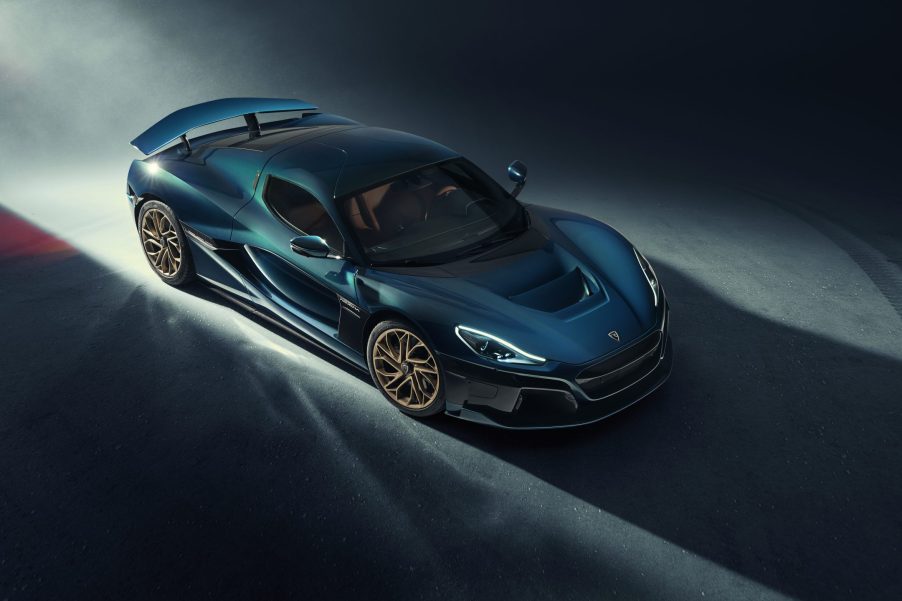
$2.4 Million Rimac Nevera Makes 1,900 HP and Takes 1.85 Seconds to Reach 60 MPH
While it’s always fun to be a billionaire, you have more options in the hypercar and supercar space than ever before. With the shift away from internal combustion, we’ll undoubtedly see many of these ultra-limited machines turn to electricity. This club of rare machines grows by one today with the Rimac Nevera. While it was previously known as the C_Two, this electric hypercar’s new name gets inspiration from a storm.
According to Rimac’s latest release, the Nevera develops 1914 hp from four electric motors. However, the biggest technological advances come in the form of weight savings and aerodynamics. In fact, this car’s entire carbon-fiber monocoque weighs just 440 lb.
How fast is the Rimac Nevera?

To say that the Rimac Nevera is fast would be a massive understatement. As mentioned in the intro, this electric hypercar develops 1914 hp and 1740 lb-ft of torque from four electric motors. According to Rimac, the Nevera can hit 60 mph in as little as 1.85 seconds. However, it is worth noting that the car requires a one-foot rollout and a high-friction surface.
Regardless, this hypercar needs just 8.6 seconds to complete the quarter-mile. It’ll accelerate from 0-186 mph in 9.3 seconds and top out at a max speed of 258 mph. In short, this eco-friendly monster will leave some of the world’s most expensive hypercars in the dust.
As mentioned earlier, the Nevera features a carbon fiber monocoque. However, the Croatian carmaker developed a brand-new battery pack that improves the car’s structural stiffness by up to 37 percent. Thanks to the heavy 120-kWh battery under the car’s floor, it still weighs in at 4,739 lb or about as much as a Ram 1500.
To offset this weight penalty, the Nevera features a couple of intricate aerodynamic modes. The first is the “Low Drag” mode which reduces the car’s aerodynamic drag by 17.5 percent. Opt for the “High Downforce” mode, and you’ll get 326 percent more downforce.
You still get 342 miles of electric range

While the massive battery certainly presents a heavy problem, you still get excellent electric range from the Rimac Nevera. In fact, the Croatian carmaker estimates that you’ll be able to cover at least 342 miles before needing a charge. Once you plug in, it’ll take you around 22 minutes to go from 0 to 80 percent. This is only possible because the Nevera supports ultra-fast 500-kW charging. Keep in mind. This entire system was built in-house by Rimac.
In terms of weight distribution, the battery pack’s presence doesn’t disrupt things too much. That’s because the Nevera still retains a 48/52 weight distribution. Additionally, it is worth noting that since the weight is concentrated on the bottom of the car, it also has a very low center of gravity, allowing it to handle better.
Only 150 Rimac Nevera examples will hit the road at $2.4 million each

As you might imagine, the Rimac Nevera isn’t poised to sell in big numbers. Given its level of performance and the size of the company building it, we’ll likely never see one on the road. In total, Rimac plans to build 150 examples starting at around $2.4 million. However, expect bespoke options and builds to drive that price up. While it might seem pointless for average enthusiasts to get excited about a hypercar, these advancements in electric tech are wonderful to see, especially when they begin to trickle down into more affordable models.


